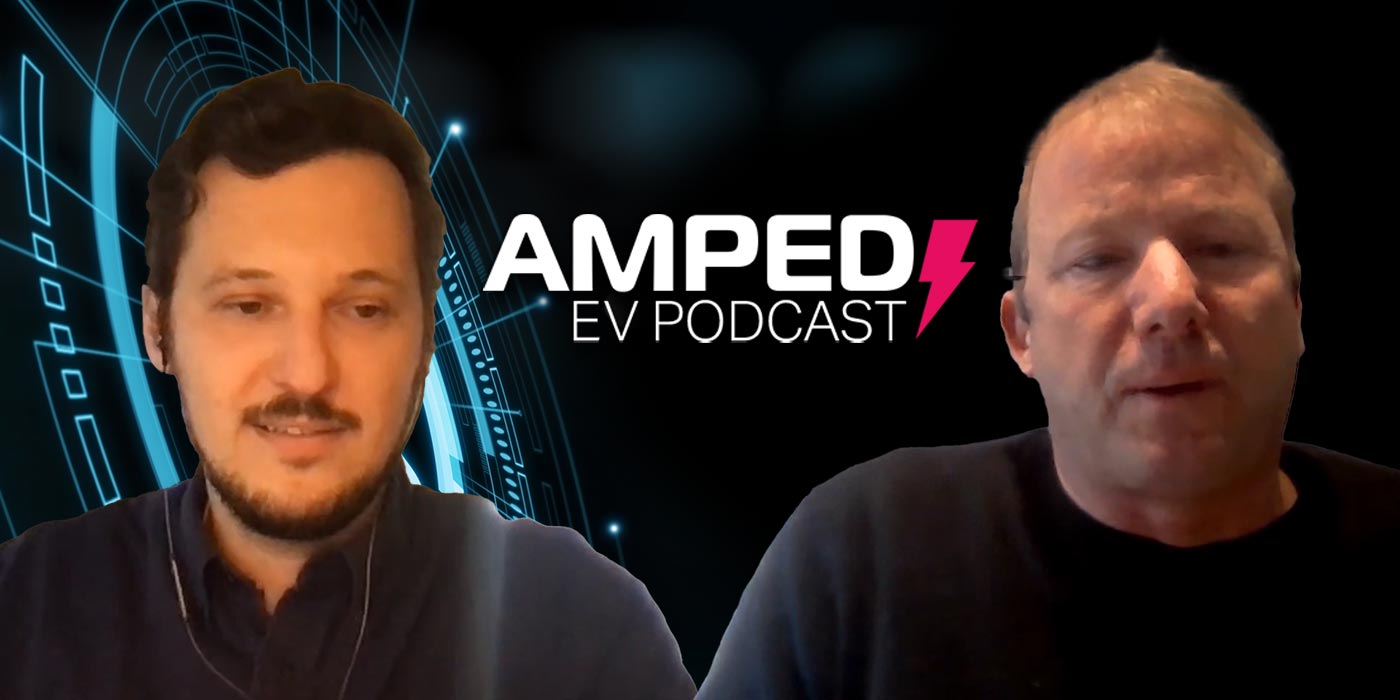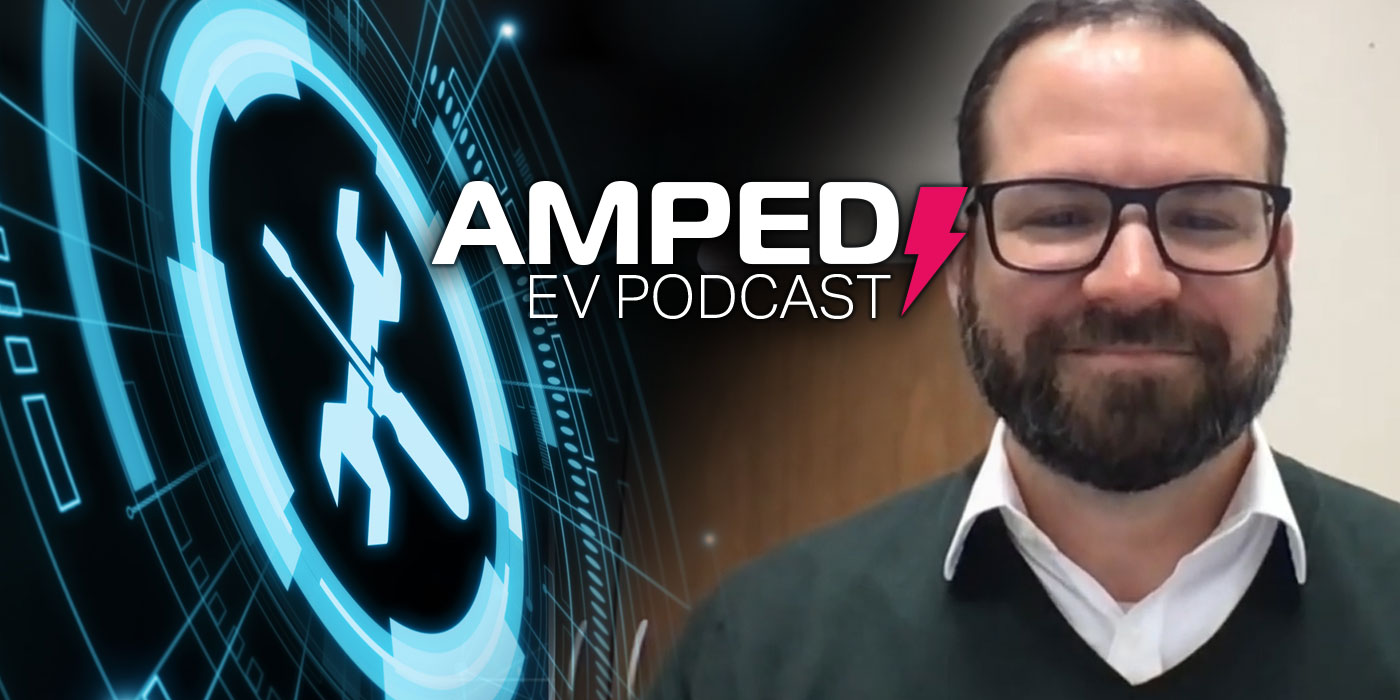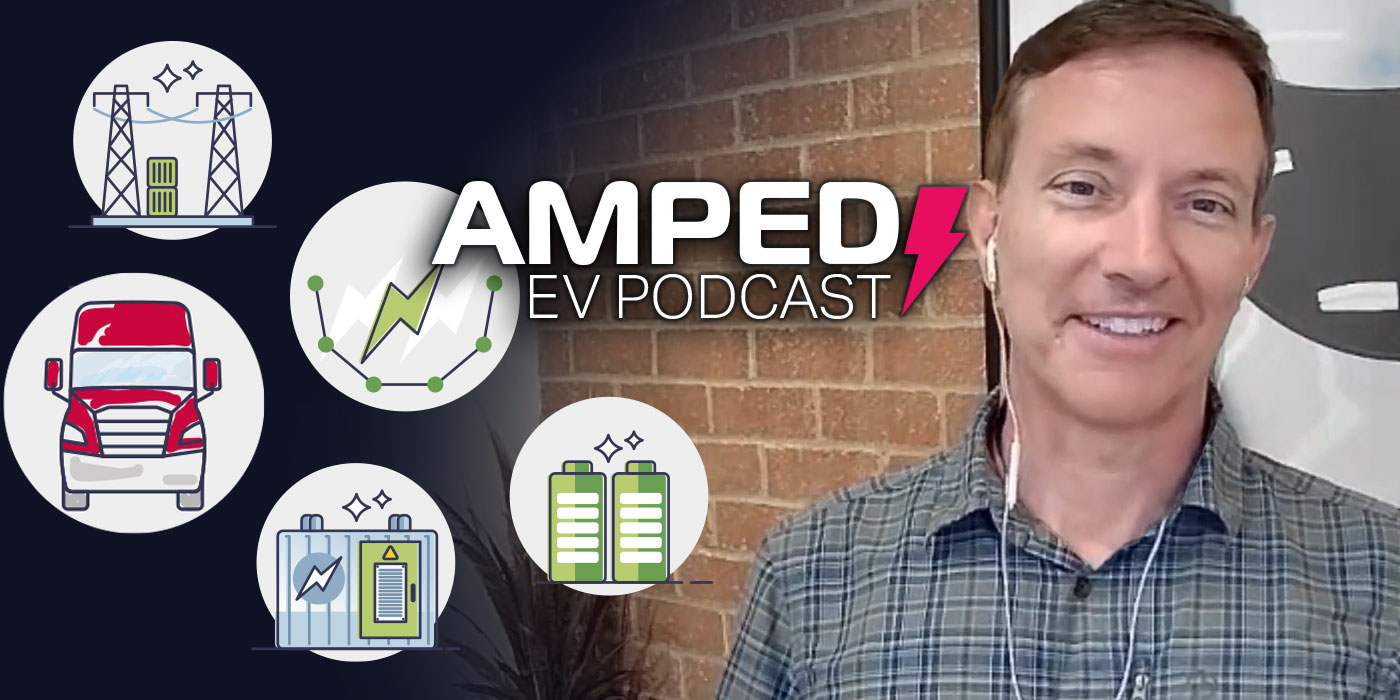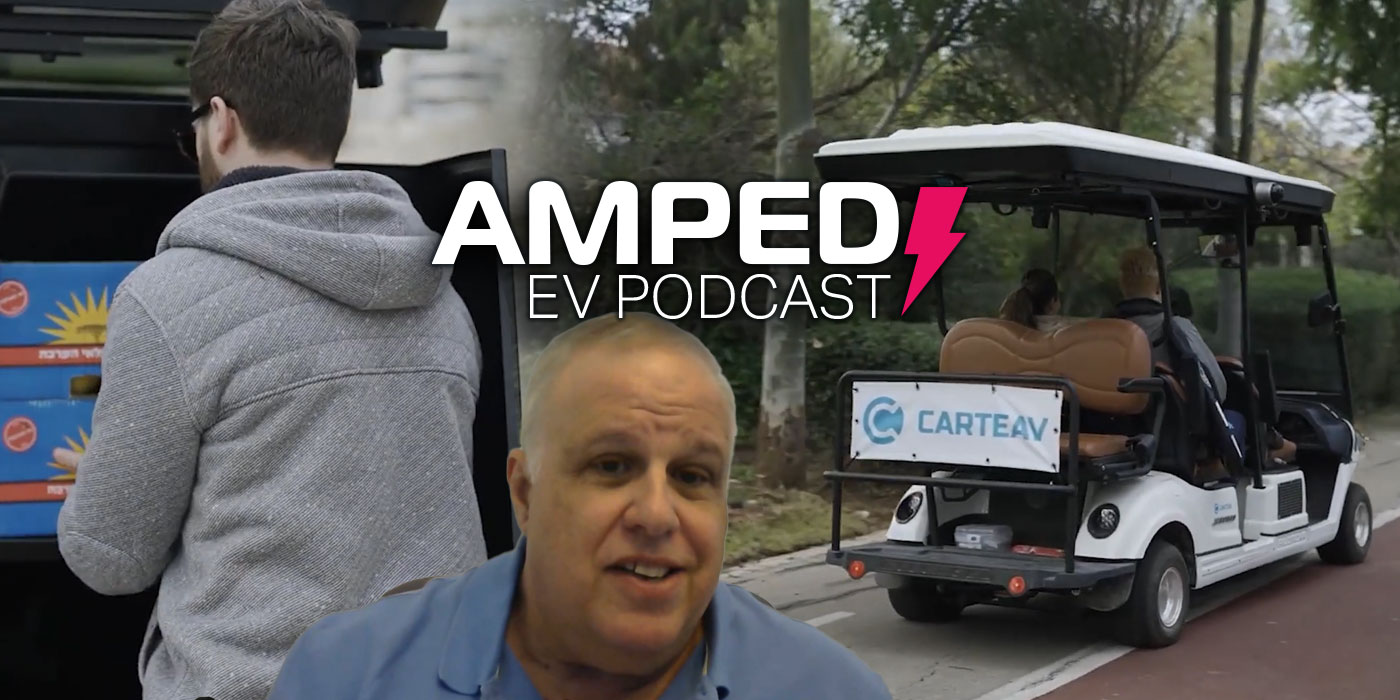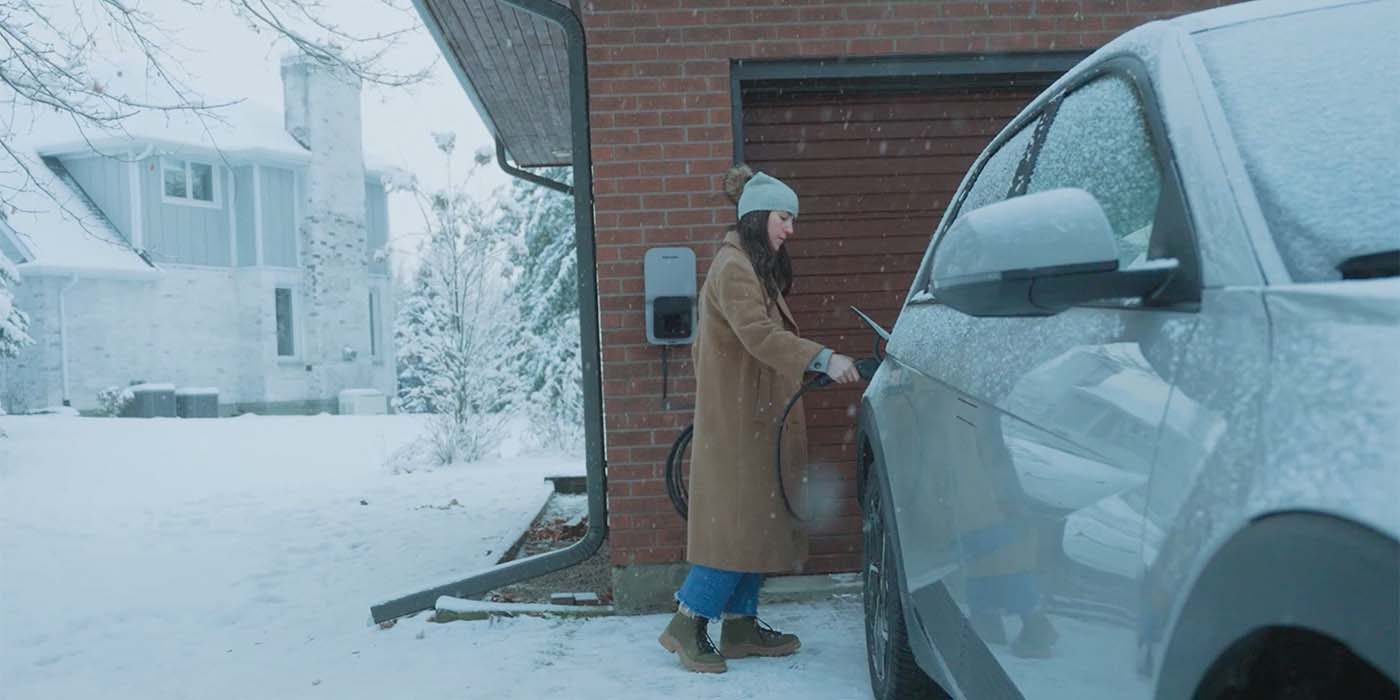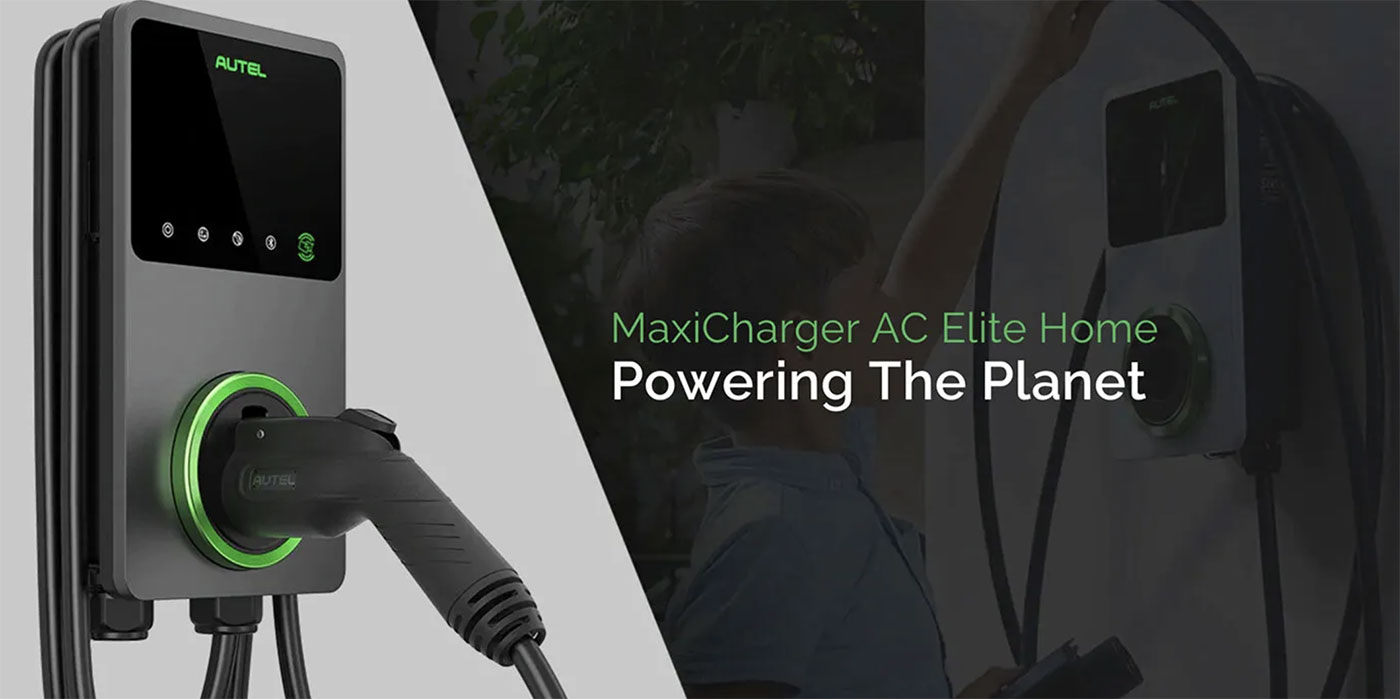If you’re an EV owner, you’re going to want to own a home charging station too. However, about a third of the U.S. population rented the space where they lived in 2021. That complicates things and slows EV adoption rates across the board.
But, where there are problems, so too are opportunities. On this week’s show, we speak with the CEO of Refuel Electric Vehicle Solutions, a company that is helping the multifamily sector navigate the ins and outs of EV infrastructure and the advantages that can come with installing even just one charger.
“If you figure on average, even if the rent is $1,500 a month, that’s $18,000 a year in rent that that one tenant brings you because they came to your apartment property. They pay you $18,000 a year because you have a charging station,” says David Aaronson, the CEO of Refuel Electric Vehicle Solutions. “Now, the value of that $18,000 at a 5% cap rate is $300,000, $350,000. So, you’ve created that much value with that one tenant.”
In this episode of The Amped EV Podcast, Aaronson talks us through reasons why it might be a good idea to have charging available for tenants, how to know if your property is ready to install EV charging, how far in advance to start the project and how to future-proof your charging infrastructure.
Want more Amped EV podcast? Click here.
Here’s a transcript of the show:
David Sickels: Hello and welcome back to The Amped EV podcast. My name is David Sickels. I am the editor for The Buzz. And today, I am in the studio with a special guest, David Aaronson, the CEO of Refuel Electric Vehicle Solutions. How are you? Thanks for flying in. David, you have over four decades of commercial real estate experience. And you are taking that experience and using it in kind of a unique way in the EV realm. So can you tell us a little bit about your background and what you’re doing with it?
David Aaronson: Well, yeah, thank you for having me again. I’ve been in the commercial mortgage banking industry for 40 years. And for those who don’t know what a commercial mortgage banker does, is they arrange capital for owners and developers of commercial real estate. And I financed arranged financing for almost every kind of property type out there.
And so during COVID, I was sitting watching television, and I noticed that a company was going public in the EV charging space. And for some reason, it resonated. I hadn’t really thought about EVs much. But as I had some time because of COVID, I sat around, I looked, I did some research. I became convinced that EVs are here to stay. And then I started thinking well, from a real estate standpoint, what impact is this going to have on real estate?
And the more I thought about it and the more research I did, it became painfully clear that real estate is going to provide the infrastructure to refuel these electric vehicles. Very basic premise. Just like the cell phone tower provides the infrastructure for the cell phones, and it’s just like the gas stations provide the infrastructure for our current mode of transportation. Same exact thing.
So I started thinking about, where is this going to have the most impact? What sector of the real estate market? And I came to the conclusion that it was the multifamily sector. And here’s why.
At nighttime, these people who own these cars park their cars at night, and they’re parked. And depending on the car and the battery, it takes six to 10 hours to charge a car. So they’re sitting there at night in that parking lot with nothing to do. The electric vehicles will be charged at night. Utility companies want that to happen because it protects the grid. There’s plenty of electricity at night to charge these cars. During the daytime is when the stress comes on the grid. But at night, there’s plenty.
And then as I got into it, I realized that there are a lot of problems. Because most of the real estate that’s been developed in this country today was developed without ever thinking about providing electricity for charging stations. So they don’t have enough.
And as I thought more and more about it, one of the basic fundamentals I’ve learned in business is if you can solve problems for people, there’s a business there.
You got to remember, I grew up in Houston, Texas in the ’80s, in the mortgage banking business. Now you don’t remember that. But I’m going to tell you, the people in the real estate business will never forget that.
David Sickels: I believe it.
David Aaronson: Because interest rates were high, we had a major depression, tax laws changed, and basically most of the banks went broke. So it was a very difficult time. And I learned to survive in a difficult time back in the ’80s and early ’90s in the real estate business by solving problems. That’s what we did. We had to find capital. It was a problem. If you own real estate, you have to have capital. This is really not any different. We are solving people’s problems, and helping them put up EV charging stations.
David Sickels: And a lot of the owners of these multifamily buildings, they’ve never had to think about doing this before. So this is a really interesting niche for you to have discovered and gotten into. When you are helping the owners of these dwellings install these charging stations, is there a common problem that you’re running into or unique situation, anything like that, that you can explain?
David Aaronson: Well, the very first thing is the apartment. The apartment property usually doesn’t have enough electricity, spare capacity of electricity, to host any more than one or two, maybe four charging ports.
Now, that’s enough to serve 20 to 30 cars. Which seems like a whole lot of cars, especially today. But here’s the problem. Here’s the opportunity. Five years from now, 10 years from now, you’re not going to have just five or 10 electric vehicles on your property. You’re going to have 50 to 100. And you are going to need to have more charging stations to serve those residents, or they’re going to move to a property where they can find them. Gotcha. So I think the first thing is getting the property owners to understand that it’s not about buying the product. It’s about putting the right electrical infrastructure in.
We have a lot of our clients that will commit to buying product today. They’ll commit to buying 300 charging stations for their 50 property portfolio. And they’ll negotiate like crazy to get the price of these charging stations down. But when they go to get them installed, they don’t realize that the electrician is charging them twice as much as they need to charge them.
David Sickels: Yeah. Yeah. There’s another cost there.
David Aaronson: And by the way, the cost to run the electricity is usually more than the cost of the equipment. So our message is you start with understanding what your property can support. You don’t start with buying the product and then finding out what your property can support.
David Sickels: Absolutely. Absolutely. So you’re talking about, there are a number of costs associated with doing this. So what is the advantage to the property owner deciding that now’s the time to install an EV charging station? You’re making a major investment here. Where do they see that come back?
David Aaronson: So there’s a couple of things. The first thing, the very first thing is drivers and owners of electric vehicles. When they want to lease an apartment, they are going to the internet to see which properties have EV charging stations. If you don’t have that box checked, if that doesn’t show up as an amenity on your website, they’re not even calling you.
David Sickels: It’s like if I have a dog.
David Aaronson: If they say no pets allowed, you’re not even going to go there. So you don’t even know what you’re missing. We talk to apartment owners or managers that say, “Well, we don’t have any demand.” “Well, do you have any charging stations?” “Well, no.” “Well, maybe that’s why.”
Here’s the other side of it. If you figure the average rent, and right now most of the apartments that are installing EV charging stations are the upper-end apartments. So if you figure on average, even if the rent is $1,500 a month, that’s $18,000 a year in rent that that one tenant brings you. That they came to your apartment property. They pay you $18,000 a year because you have a charging station. Now, the value of that $18,000 at a 5% cap rate is $300,000, $350,000. So you’ve created that much value with that one tenant.
David Sickels: Got it. That makes sense.
David Aaronson: But on top of that, there’s the business of charging that tenant to refuel their car. And you can make money off of that. So that’s what we do. There are basically two models. One model is the property buys, installs and owns, and operates its charging stations. And the other model is we will come in, and install, and own, and operate the charging stations. Reimburse you for the electricity that we use, and share the profit with you.
Very similar model to the laundry room model that was in existence when they had laundry rooms in apartments. The owners didn’t want to operate the washers and dryers in these laundry rooms. So they had an operator of the washers and dryers come in and put them in. And they were responsible for maintaining and running the business there. Same exact model. So you have two different models. Most apartment properties just have not recognized that they need to spend capital to update their electrical infrastructure.
David Sickels: Now, do you partner with several different charging station vendors? How do you determine what charging station is right for that particular property?
David Aaronson: So, that’s a great question, David. I think the first thing is we look to see what the property is capable of handling as far as the charging station. And what do I mean by that? We’ll go to the electrical panel. Do they have 40 amp circuits? Do we have room to put a 100 amp circuit in? Can we go use 60 amp circuits? We want to get as much charging power to that charging station as we possibly can. Because we know that there’s limited supply of electricity to use, and we want to make it go as far as we can.
So if we can put up a Level 2 charging station that’ll give 70 miles an hour of charge versus one that gives 30 miles an hour, we do that today. Because we know the batteries are getting bigger and the batteries are getting stronger. And it’s just a matter of time, and you want to get as many cars charged as you can off of that circuit.
David Sickels: Absolutely. Absolutely. You also talk about future-proofing. When you are investing in these charging stations, the last thing you want is to invest in one, and then have to replace it a few years later. So how do you advise the property owners to go about future-proofing this part of their business?
David Aaronson: So there’s a couple of things. First off, when we run the conduit for the charging station. If we have enough electrical capacity, then we’ll run a second line. We’ll daisy chain to a second spot so we can add a future station in the future. And it’s just the cost of installing. We don’t need to run anything. That’s really what we’re talking about.
If we’re talking about a new construction project, we have a consulting service. It’s much less expensive to plan and lay the conduit down during construction than it is on an existing property. So we’ll go in and we’ll design the system with the engineer and say, “Here’s what we need, and here’s how many spaces we need, and here’s how much electricity we need.” And it’s just a much easier way to do it now. Now, that doesn’t mean we’re going to deploy all those stations when the property opens. Okay? It just means the opportunity is there. And that’s what we’re doing.
David Sickels: How about software in these charging stations? Obviously, the power output is very important. How important is the software that’s actually running these stations?
David Aaronson: Most companies… And there are about 80 different companies out there today designing software for charging stations. Most of them are private. A couple of them are public. But they all do different things. Now, a lot of them all do the same thing too. They all can keep track of the electricity that’s being used.
There’s a thing called load management, which means you can run more than one charger off of the same circuitry. And what happens is that charger will see how much energy the car needs. And as the car fills up, it needs less and less energy. That energy will be spread out through the other chargers. So you can get more done with load management than you can if you have just one car charging. So that’s pretty standard in most of these chargers today.
But there are other things that we look for because we’re thinking about the future. We’re not just thinking about today. For example, one of the big problems is people who drive an electric vehicle, they see a charger. And they’ll come up, and they’ve driven 20 miles that day, and they’re going to park their car in that space all night long, in their apartment complex. They’re going to park all night long. And they’re only going to need 20 miles, which is about an hour’s worth of charging. But they’ve taken the space up all night.
And so if you have somebody else driving an EV, they get irritated because they’re like, “Well, I can’t get a charge because this guy comes home at 5:00 every night, and he’s there, and he doesn’t leave till 8:00 in the morning.” How do you deal with that? Well, we set a minimum charge. Or we’d charge a transaction fee. And so even if it’s a minimum of $3, that person will no longer do that habit. Okay? Because it’s too expensive for them.
David Sickels: Do you act as kind of a consultant for these businesses to choose the right software and the right charging station for them?
David Aaronson: Absolutely. I was going to tell you, the other thing we look for is, amazingly enough, the reservation system. I mean, if you have a limited number of spaces at your property, charging cars, and you’ve got 50 people wanting to get into four spaces, you need to have a reservation system. They’re going to need to know that this is my time. And by the way, if they don’t show up, they need to be billed for not showing up.
These are things in the software that we look for. Does someone stay past their time? Of course in apartments, you’re not going to get anybody to move their car at night. Okay? They’re going to park there at 7:00 when they get home, and they’re going to stay there all night. But are they going to stay there till noontime, or are they going to move their car? Are they going to stay there for three days? We need to get them to move their car so somebody else can get in there. And so that’s why there’s a fee set up, to encourage that behavior.
David Sickels: Got it. And if I install one of these at my property, what do I need to worry about in terms of maintenance? Do I need to have somebody on the property who’s familiar with this machine who can maintain it?
David Aaronson: Well, and here’s one of the things. We’ve talked to hundreds of apartment owners. And most of them are starting to realize that they do need to have charging stations. They don’t know whether they want to own them or they want us to own them, but they don’t want to make any mistakes. But the one thing they all have in common is they don’t want to manage them or maintain them. They don’t know what to do with them. And so that’s one of the services we provide.
I mean, if you think about it, there isn’t a whole lot that goes into the maintenance of these things, when they’re working. It’s when they don’t work, you have to figure it out. And so if you own 50 properties, you could have 10 different brands of charging stations across your portfolio at this point in time. And every one of them has a different way to get them fixed and dealt with.
The maintenance man has been on the property and he knows it, but guess what? He quit, and he moved to another property. Then nobody else knows what’s going on with that charging station. So the manager picks up the phone, and calls the company, waits 45 minutes for someone to answer the phone, and doesn’t get an answer. These are the problems that we’re running into, and that we’re here to solve. So that’s one of the opportunities we see in our business when we say we’ll manage it and handle it. We don’t need to do anything. We’ll do everything.
David Sickels: How about the timeline? If you’re a property owner and you want to begin installing these, how long is this whole process going to take?
David Aaronson: Well, it varies all over the country. We’re a national company. We’ve put them up from Washington to Florida, the state of Washington to Florida. California to the East Coast. And it’s all different. It just depends. You have to get building permits. Some cities require it. Some don’t. The electricians are very busy. Sometimes, you have to wait a week or two to get in line. They have backlogs.
There doesn’t seem to be that much of a backlog on getting the hardware these days. A year ago, there was a big problem. Today, especially on Level 2 stations, there’s no backlog. If you go to a DC fast, there’s a backlog, because the Biden bill has encouraged the use of the installation of DC fast charging stations along the freeways. There’s a big backlog of those stations.
So it just varies. Generally, once we get out there and get the work going, it can take just a few days. Okay? It just depends on whether or not we’re setting a post in concrete to hold the station, or we’re mounting it on an existing wall. It doesn’t take that long, but it’s the entire process.
If we’re getting a grant, we have to follow the process. And every process is different to get that grant. So sometimes… I mean, we heard on a project the other day that the utility company couldn’t get us electricity for a minimum of eight months. So you have to get in line. But you have to have it. So these things don’t work unless there’s electricity.
David Sickels: What do you do if you determine that a specific property does not have the electricity requirements that they’re going to need to run one of these stations?
David Aaronson: We’ve run into that. And quite frankly, they just don’t have much of a chance. You have to go to the city or the utility company, and see if they will provide additional electrical capacity. And that could be very costly.
I’ll give you two examples. We were in Austin, Texas. And the city said we had a property that had no room for any charging stations. And the utility company said it would take $70,000 and six months minimum to get it there. We were in Connecticut. They bury their utility lines, so it would cost a couple hundred thousand.
This is information that we think apartment owners need to know before they buy a property. So we’ve started a division that does these due diligence reports. If you’re buying a property today, you need to understand what that property’s electrical infrastructure is, and what its capabilities are. And you also need to know what the utility company’s position is in providing additional capacity. And so that’s what these reports do.
David Sickels: Can that be a long process to be speaking with the utility companies, and speaking with the city? Are we talking years here?
David Aaronson: No, everyone’s different. The hard thing is to get them to answer the phone, Austin had a freeze last week, so their utility company is fixing services. You can’t get them to answer the phone. But that’s just an extreme example. It just depends on the utility company, to be really honest with you. Everyone is different.
David Sickels: And that’s a good point. When you’re working with so many of these different companies, each company is different. Each utility company is different. Each has a unique scenario.
David Aaronson: Each property is different. And so that’s what we aim to do. For these large owners of portfolios, of multifamily properties, our aim is to bring all that into our house and let us deal with it. These companies aren’t set up to do that. And so it seems like a perfect outsourcing opportunity for these companies to have a company like ours that understands the EV charging business and the real estate industry. Take it from beginning to implementation to maintaining and managing.
David Sickels: I’ve heard from a lot of different people that if you’re not working with a partner who is familiar with the process, it could be a real pain to track down the right people you need to be talking with, and just keep the ball moving.
David Aaronson: It is. It’s just like any construction project these days. Everything is hard. And there are supply chain issues. We see it in the electrical industry. Sometimes, we have problems getting circuits. Sometimes we have challenges getting panels. But we have a team that is knowledgeable in all this, and we’ve been able to do what we need to do to get the charging station up and operating as quickly as it can.
David Sickels: So David, are you working solely with the multifamily property owner audience here? Or are you working with shop owners maybe to help them choose the right charging station?
David Aaronson: So that’s a great question, David. Our business is really twofold. One of them is we want to own and operate a network of EV charging stations in multifamily properties around the country. But we are also a reseller of EV charging stations.
And what we have found is there are a lot of people who are calling us and want to have our information to understand what the right charger is to put up for the job that they have.
One of the examples that we’ve talked about is the auto repair shops. Pretty much all of them are going to need to have an EV charging station. And so the question is, who do you call that understands the products on the market and what’s right for that property?
I’ll give you an example. If you are an auto shop and you have a lot of cars that stay overnight, you can do with a Level 2 charging station. We would run it on a 100-amp circuit. And that would allow that customer to get up to 70 miles an hour as they charge their car.
But if your clients require a quicker charge, you’d move to a DC fast station. And these come in all different types of charging levels. The main thing is what is the cost to get the electricity that’s needed to power these things?
So we have DC fast stations that can charge at 30 kilowatts an hour. And we also have them that go up to 350 kilowatts an hour. Those are the ones that can charge a car in 20 minutes, but it takes a lot of electrical capacity to do that. So there is an art to picking out the right one. And as a reseller, we want to make sure that you’re choosing the right one for your clients’ needs.
David Sickels: Are you working with a lot of shop owners?
David Aaronson: We really are not at this point. I mean, we’re starting to. In fact, we have one client that needs some fleet charging overnight, for some of their cars. And so we’re selling them some DC fast chargers.
We just signed a reseller agreement. We’re resellers for a number of different companies right now. One of them is Blink Charging. Another one is Xeal. And another one we just signed up for was ABB. They’ve I think, manufactured more EV chargers than any company in the world. So we’re continuing to look for companies that provide the product that’ll serve our clients’ needs.
David Sickels: Excellent. So one last question for you, David. If I’m a property owner, how do I determine if this is the right time? Or should I wait a year? Or do I just stand out on my property and count how many EVs are driving by? How do you figure that out?
David Aaronson: So a couple of things. Well first off, look. There are a lot of grants out there. Utility companies offer grants. State states offer grants. And I think the first place we start is we look for the areas that have the grants to help pay for putting these stations up.
But the reality of the situation is it doesn’t really cost a whole lot to put one up, especially if we’re paying for it. Why not have one up? Why would you lose the opportunity to lease to just one tenant? So you have to get started, and you have to know it’s not only getting started. It’s trying to develop a long-term plan, to get additional electrical capacity.
Or, maybe you can’t get it. And if you can’t get it, that’ll be an important factor in determining whether you own the property or you sell the property. Is that buyer going to offer the same price if they realize that they can’t get any electrical capacity to host charging stations? That buyer’s eventually going to say, “Well, we’re not going to pay this price for that, because all of our tenants are going to have to go somewhere else and charge.”
David Sickels: For sure. For sure.
David Aaronson: So to us, it’s just common sense. Especially if you own an apartment property, you should be doing it today. We met with a big company that owns a lot of student housing projects. They don’t have to charge stations up, but we’re talking to them about it because their residents are going to be driving electric vehicles.
And by the way, as a driver of an electric vehicle, I can tell you they really are less expensive to own and operate. They really are. I mean, I’ve driven 9,000 miles this year, and I’ve spent about $500 on electricity.
Now granted, that’s at my house. If I was at an apartment project where I’m paying a markup on the utility rates, it would be more. But it’s easy. I charge at home. I don’t go to a gas station anymore. I charge at night, and it’s convenient. And I know this goes against your audience, but I don’t have to get my car lubricated and change the oil, and all these other things.
David Sickels: No, that’s not against our audience at all. I mean, there are different opportunities in different markets. It is interesting to hear from the mouth of people who actually own and operate these vehicles, and hear what their experience is and what the difference is.
David Aaronson: I’ve been pleasantly surprised.
David Sickels: Excellent. Excellent. Well David, hey, I really appreciate your time today. This was a really interesting conversation. So thanks a lot for flying in. This is great.
David Aaronson: It’s been a pleasure. I’ve really enjoyed it. I look forward to working with anybody that needs some advice or information on how to implement EV charging stations at your property.
David Sickels: Fantastic. Well, thank you everybody for watching. We’ll see you next time. Take care.






